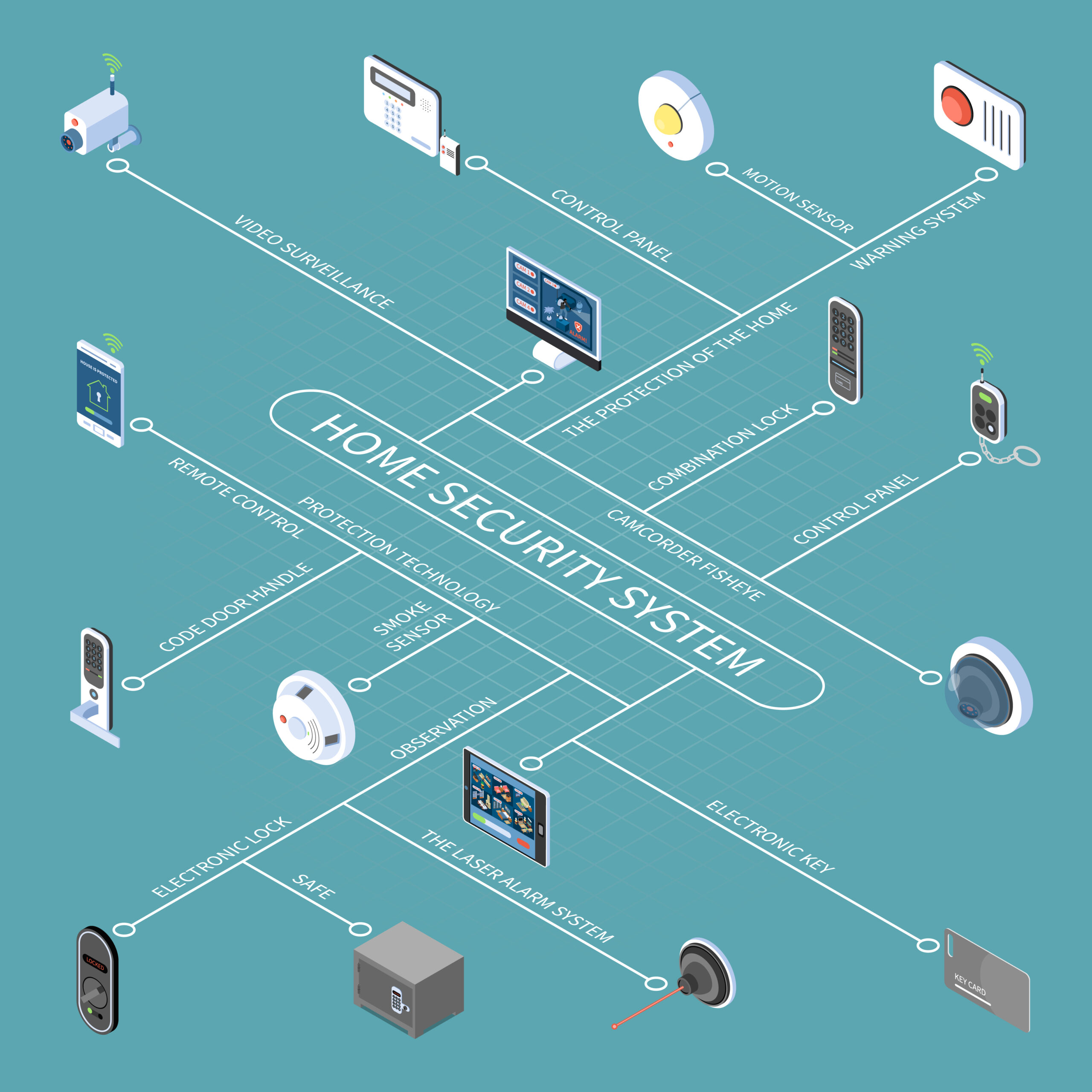
What is a Home Security System and How Does it Work ?
A home security system is a type of security system specifically designed to protect residential properties and the occupants within them. It includes a range of devices and technologies aimed at preventing unauthorized access, detecting intrusions, and providing alerts or notifications in case of emergencies. Here’s how a typical home security system works:
Components and Devices: A home security system comprises various components and devices that work together to provide comprehensive protection. These may include:
- Door and Window Sensors: These are placed on doors and windows and detect if they are opened or tampered with.
- Motion Sensors: These detect movement within their designated areas and trigger alarms if unauthorized motion is detected.
- Security Cameras: Cameras are strategically positioned to monitor key areas around the home. They can provide real-time video feed and may also have recording capabilities.
- Control Panel: The central control hub of the system, where signals from sensors and devices are processed. It may have a keypad for arming and disarming the system.
- Sirens and Alarms: These produce loud sounds and/or flashing lights to alert homeowners and deter intruders.
- Remote Key Fobs: Keychain-sized devices that allow users to arm and disarm the system without needing to use the control panel.
- Security Signs and Stickers: Placed around the property to indicate that the premises are protected by a security system, potentially deterring potential burglars.
Arming and Disarming: Homeowners can arm and disarm the security system using the control panel, key fobs, or mobile apps. When the system is armed, the sensors and detectors are activated, ready to detect any unusual activity.
Detection: Once armed, the sensors continuously monitor the environment. If a sensor detects a breach, such as a door opening or motion in a monitored area, it sends a signal to the control panel.
Control Panel Processing: The control panel receives the signals from the sensors and determines whether the detected event is a genuine threat or a false alarm. It processes the information and prepares to trigger appropriate actions.
Alerts and Notifications: If an intrusion or threat is confirmed, the system can activate alarms, such as loud sirens or flashing lights. Additionally, the system can send notifications to the homeowner’s smartphone, via email, or through a monitoring service.
Monitoring (Optional): Some homeowners opt for professional monitoring services. In this case, the security system is connected to a monitoring center operated by a security company. When an alarm is triggered, the monitoring center receives the notification and takes appropriate actions, such as contacting the homeowner, dispatching emergency services, or verifying the situation with the homeowner.
Response: Depending on the severity of the situation, the homeowner can take appropriate action, such as contacting authorities, checking live camera feeds remotely, or returning to the property if necessary.
Overall, a home security system provides peace of mind to homeowners by deterring potential intruders, providing early detection of threats, and facilitating quick responses in case of emergencies. The specific features and functionalities of a home security system can vary based on the chosen components and service plan.